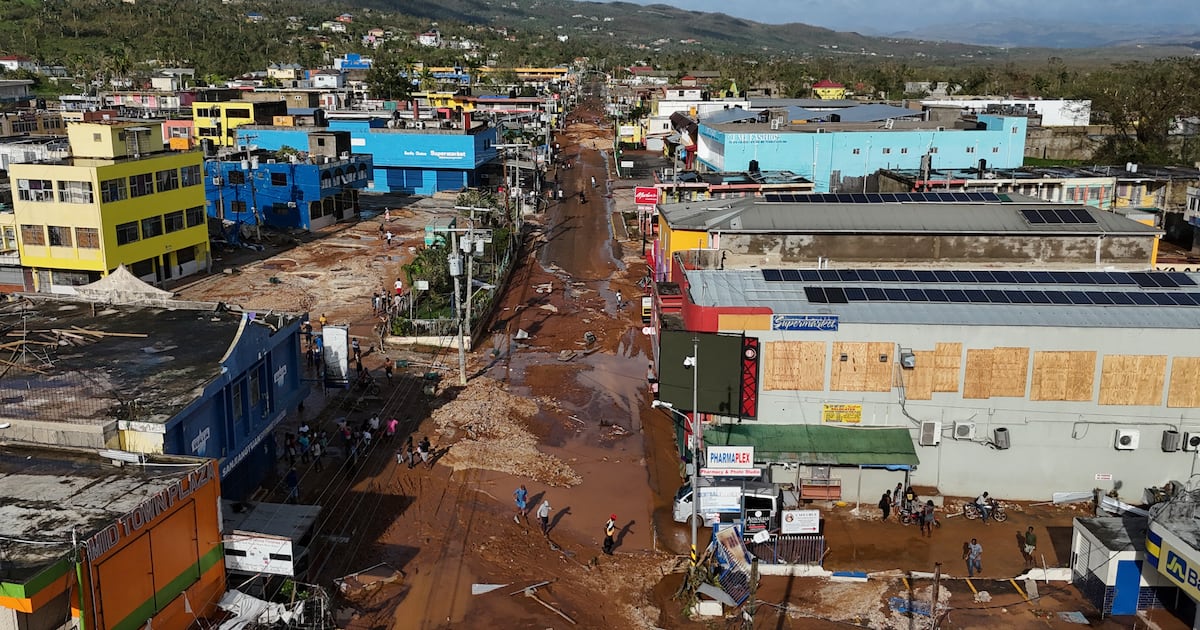Copyright Anchorage Daily News

Hurricane Melissa is racing toward Bermuda as Caribbean countries reckon with its destruction in Jamaica, Cuba, Haiti and the Bahamas. At least 26 people have been confirmed killed in Haiti and Jamaica, with Caribbean officials continuing to assess and respond to the damage. Melissa, now a strong Category 2 hurricane, was about 605 miles southwest of Bermuda with wind speeds of 105 mph, moving northeast at 21 mph as of early Thursday, the National Hurricane Center said. It made landfall in the Bahamas, its third landfall this week, around 5 p.m. local time Wednesday as a Category 1 hurricane. Although Melissa is moving away from the Caribbean, the devastating storm’s adverse impacts are expected to continue through the end of the week. From late Thursday into early Friday, Melissa is forecast to pass just west of Bermuda - where there is a hurricane warning - and could make a final landfall in or pass close to Newfoundland, Canada, late Friday or early Saturday. A separate, fast-moving storm passing from the Mid-Atlantic on Thursday to New England early Friday is predicted to harness Melissa’s tropical moisture, causing downpours, strong to severe thunderstorms and gusty winds from D.C. to Boston. Melissa’s toll Here’s where Melissa has made landfall this week: -Western Jamaica, near New Hope, on Tuesday afternoon: Category 5, 185 mph. -Southeastern Cuba, near Chivirico, early Wednesday morning: Category 3, 125 mph. -Central Bahamas, near Clarence Town, on Wednesday afternoon: Category 1, 90 mph. Officials in Jamaica, Cuba and the Bahamas were assessing the damage on Thursday. Jamaica’s agriculture minister said Wednesday that almost 90 percent of homes were affected and many communities cut off from roads, electricity and the internet. At least three people were killed while preparing for the storm, the country’s health minister said Monday. In Black River, a coastal town about 10 miles southeast of where Melissa made landfall, up to 90 percent of roofs were destroyed, Jamaican Prime Minister Andrew Holness said in televised remarks Wednesday. “Black River is what you would describe as ground zero,” he said, noting that “people are still coming to grips with the destruction.” Electricity and internet supplies there were impacted, Holness said, adding that the priority was to clear roads to allow supplies to enter affected areas. Dennis Zulu, the U.N. resident coordinator for Jamaica, described “a country that’s been devastated to levels never seen before.” He told a virtual briefing Wednesday that assessments were still needed to determine the extent of the damage, but added: “I don’t think there’s any single soul on this island who’s not affected by Hurricane Melissa.” As of Wednesday, about 25,000 tourists remained in the country, Dana Morris Dixon, minister of education, skills, youth and information, said in a government release. Melissa also unleashed heavy floods in Haiti. More than 20 people - including 10 children - were killed in flooding in Petit-Goâve on the coast when the La Digue river overflowed, according to the country’s civil protection agency. Officials reported three additional weather-related deaths last week, when Melissa was a tropical storm. In Cuba, more than 735,000 people were evacuated by Tuesday night, according to President Miguel Díaz-Canel. No deaths have been reported as of Thursday. Where Melissa is going The Storm Prediction Center wrote that damaging winds and perhaps tornadoes are possible in the Mid-Atlantic region of the United States. Coastal flood warnings and advisories extend from Virginia to Long Island and Connecticut, where a foot or two of water could inundate flood-prone areas near the shore. Bermuda is bracing for wind gusts of 60 to 80 mph, as well as squally rain and life-threatening sea conditions. The weather is expected to clear later Friday. Melissa’s final landfall could occur in Newfoundland late Friday or early Saturday. It would bring strong winds and heavy rain, before combining with another system and losing its tropical characteristics in the cool waters of the North Atlantic. No tropical storms or hurricanes are forecast to develop immediately after Melissa, although hurricane season in the Atlantic runs through Nov. 30, and the waters that caused Melissa to become a monster storm remain unusually warm. A record storm In a post late Wednesday, hurricane chaser Josh Morgerman, who was near Melissa’s landfall location, described the scene: “The hurricane’s inner eyewall was a screaming white void. All I could see through the cracks in the shutters was the color white - accompanied by a constant, earsplitting scream that actually caused pain.” “Perhaps the mightiest hurricane of the 83 I’ve witnessed,” he wrote. Melissa was one of the longest-lasting Category 5 storms on record, spending 36 consecutive hours at that peak intensity, according to meteorologist Michael Lowry.



